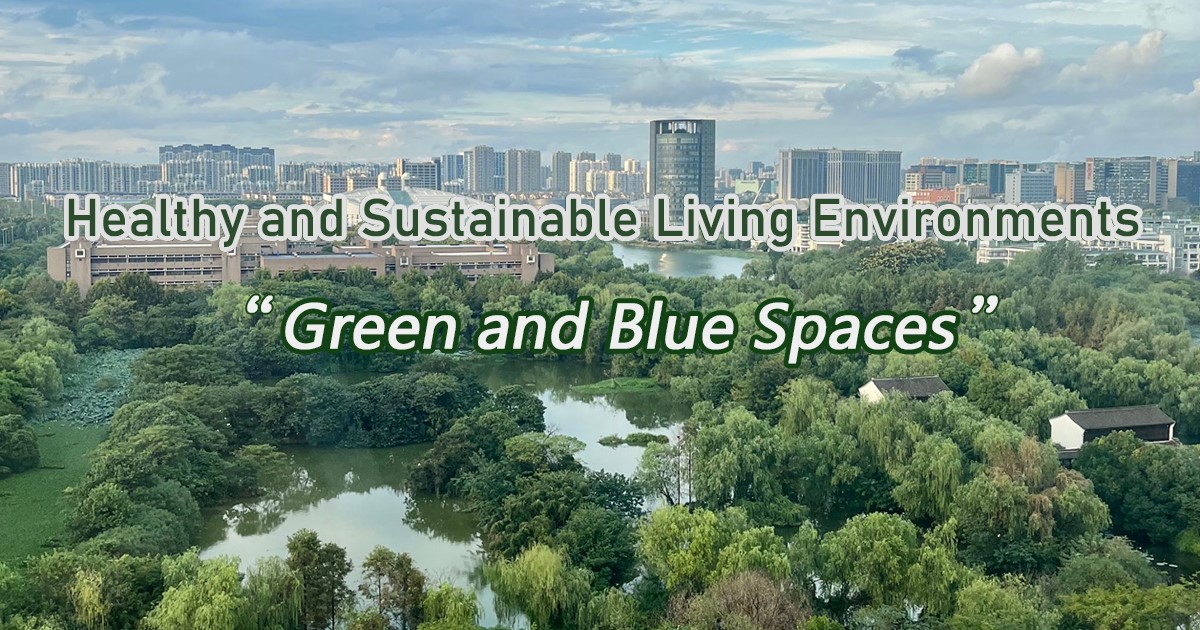Topic Menu
► Topic MenuTopic Editors




Healthy and Sustainable Living Environments: Green and Blue Spaces

Topic Information
Dear Colleagues,
A number of cities are becoming increasingly congested and polluted worldwide. Urban densification often leads to the removal or degradation of existing green and blue space in ways that are difficult to reverse. The growing understanding of the importance of healthy and sustainable living environments, and in particular of green and blue spaces, for human well-being has prompted numerous studies providing evidence on the links with a wide range of environmental, social, and health benefits. Before green–blue space can be fully integrated into the policy on urban planning and urban design, land management, and health promotion policies, the existing research questions and limitations should be addressed. We invite authors to contribute original research articles and review articles focused on a broad overview of the new methods and techniques to characterize the exposure of green and blue spaces, multiple benefits of green and blue spaces on people’s physical health and social well-beings, the roles of blue–green infrastructure in sustainable urban development, and the innovative conservation, planning, design and management strategies to optimizing the certain well-beings of green and blue spaces, covering the topic from a multidisciplinary field. To draw inspiration from a wide variety of disciplines, this Topic broadly defines green and blue spaces and well-being. Green spaces cover forests, parks, natural reserves, grasses, gardens, street greenery, etc. Blue spaces cover rivers, lakes, reservoirs, the sea, etc. Human well-being includes a healthier lifestyle (e.g., enhanced physical activity), better physical and mental health, reduced stress, more social interaction, etc.
This collection includes but is not limited to the following topics:
- New methods or data to monitor green and blue spaces;
- Role of RS and GIS in assessment of green and blue spaces;
- Equity in green and blue spaces’ proximity, quantity, and quality;
- Ecosystem service value of green and blue spaces;
- Cooling effects of green and blue spaces;
- Human behaviors associated with green and blue spaces;
- Health effects of green and blue spaces;
- Sustainable urban planning and urban design;
- Land policy on green and blue spaces.
We would like to extend a special thank you to Dr. Xin (Summer) Xu for her great support in sharing the beautiful image that serves as the Topic's Graphic Abstract.
Dr. Kejia Hu
Dr. Jiayu Wu
Dr. Jinglu Song
Dr. Yimeng Song
Topic Editors
Keywords
- green space
- blue space
- green and blue infrastructure
- sustainable urban design
- urban ecosystem
- urban landscape
- urban heat mitigation
- physical activity
- human health
- land policy
Participating Journals
| Journal Name | Impact Factor | CiteScore | Launched Year | First Decision (median) | APC |
|---|---|---|---|---|---|

Environments
|
3.7 | 5.7 | 2014 | 19.2 Days | CHF 1800 |

International Journal of Environmental Research and Public Health
|
- | 8.5 | 2004 | 27.8 Days | CHF 2500 |

Land
|
3.2 | 5.9 | 2012 | 16 Days | CHF 2600 |

Remote Sensing
|
4.1 | 8.6 | 2009 | 24.9 Days | CHF 2700 |

Buildings
|
3.1 | 4.4 | 2011 | 14.9 Days | CHF 2600 |

Preprints.org is a multidisciplinary platform offering a preprint service designed to facilitate the early sharing of your research. It supports and empowers your research journey from the very beginning.
MDPI Topics is collaborating with Preprints.org and has established a direct connection between MDPI journals and the platform. Authors are encouraged to take advantage of this opportunity by posting their preprints at Preprints.org prior to publication:
- Share your research immediately: disseminate your ideas prior to publication and establish priority for your work.
- Safeguard your intellectual contribution: Protect your ideas with a time-stamped preprint that serves as proof of your research timeline.
- Boost visibility and impact: Increase the reach and influence of your research by making it accessible to a global audience.
- Gain early feedback: Receive valuable input and insights from peers before submitting to a journal.
- Ensure broad indexing: Web of Science (Preprint Citation Index), Google Scholar, Crossref, SHARE, PrePubMed, Scilit and Europe PMC.

